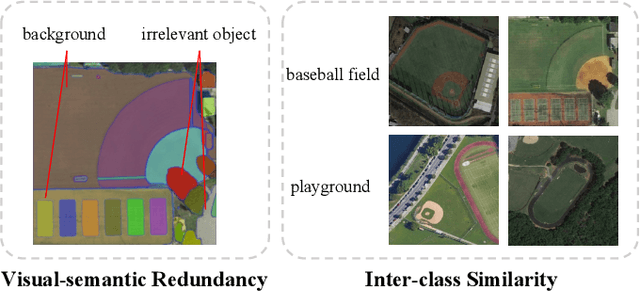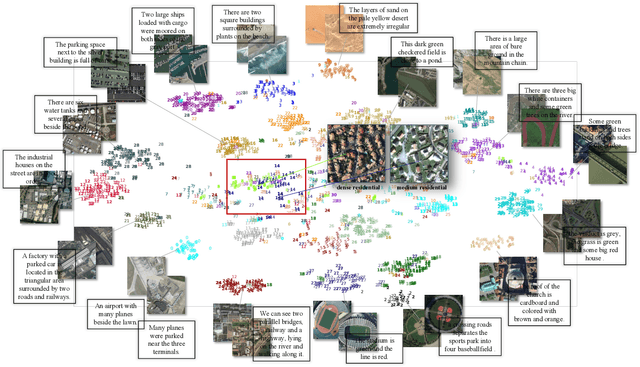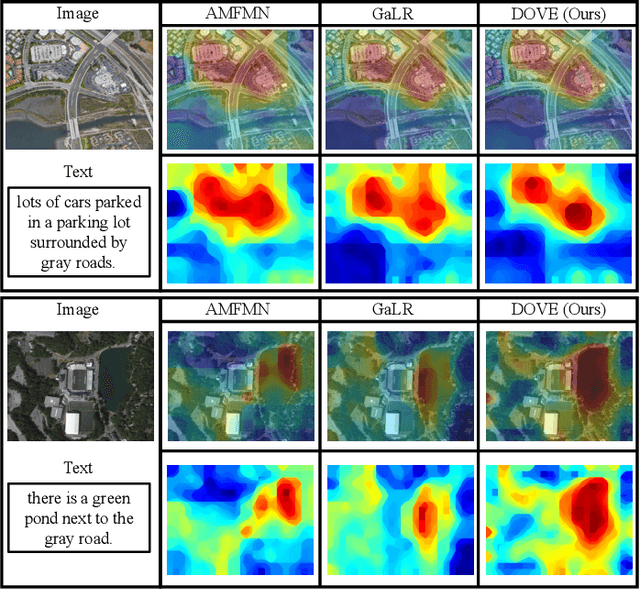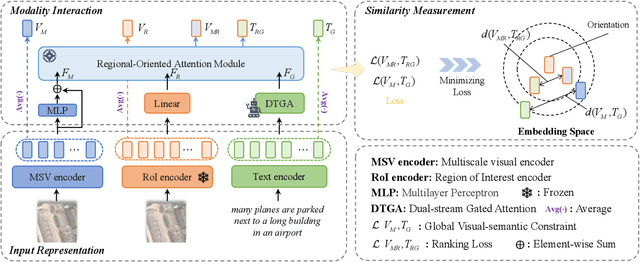Direction-Oriented Visual-semantic Embedding Model for Remote Sensing Image-text Retrieval
Paper and Code
Oct 12, 2023



Image-text retrieval has developed rapidly in recent years. However, it is still a challenge in remote sensing due to visual-semantic imbalance, which leads to incorrect matching of non-semantic visual and textual features. To solve this problem, we propose a novel Direction-Oriented Visual-semantic Embedding Model (DOVE) to mine the relationship between vision and language. Concretely, a Regional-Oriented Attention Module (ROAM) adaptively adjusts the distance between the final visual and textual embeddings in the latent semantic space, oriented by regional visual features. Meanwhile, a lightweight Digging Text Genome Assistant (DTGA) is designed to expand the range of tractable textual representation and enhance global word-level semantic connections using less attention operations. Ultimately, we exploit a global visual-semantic constraint to reduce single visual dependency and serve as an external constraint for the final visual and textual representations. The effectiveness and superiority of our method are verified by extensive experiments including parameter evaluation, quantitative comparison, ablation studies and visual analysis, on two benchmark datasets, RSICD and RSITMD.
 Add to Chrome
Add to Chrome Add to Firefox
Add to Firefox Add to Edge
Add to Edge